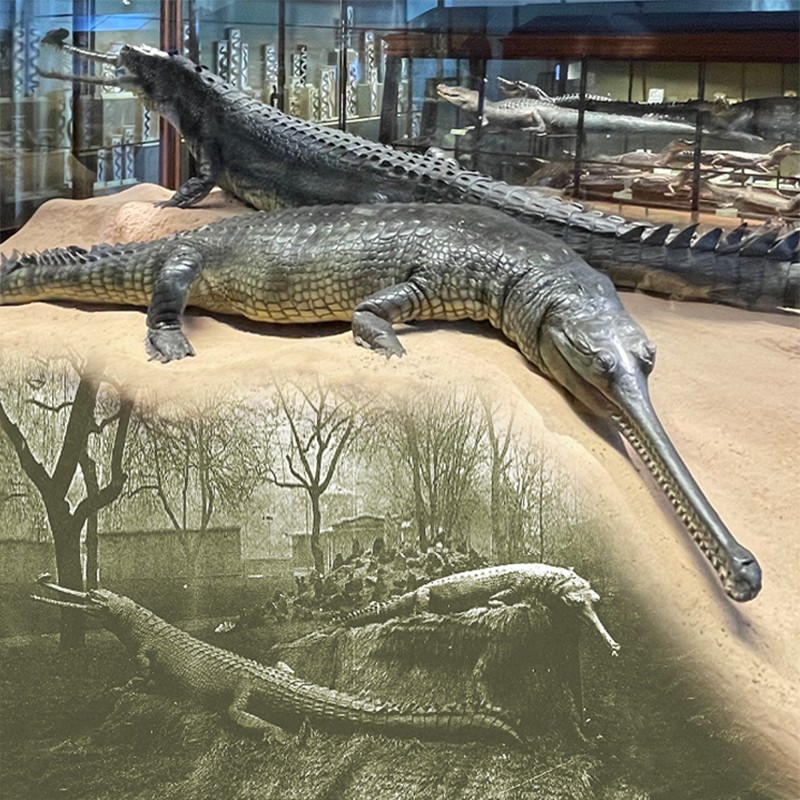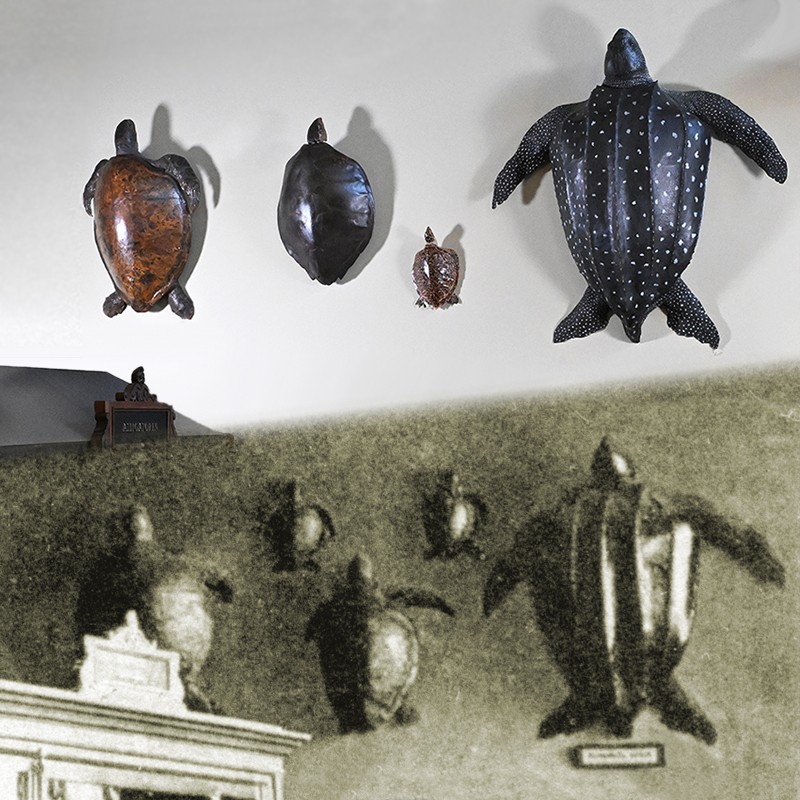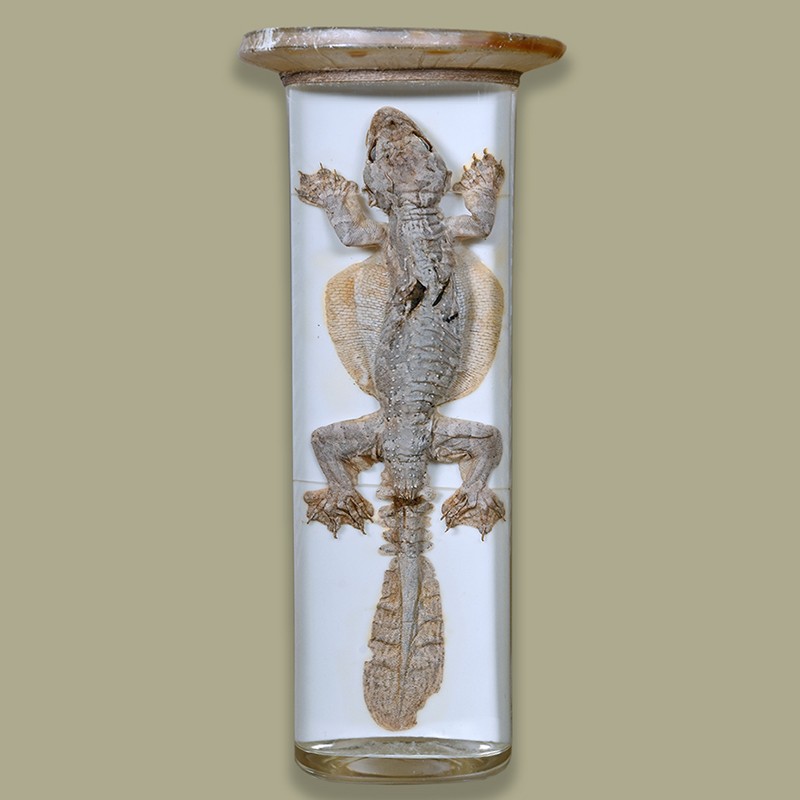
The herpetological collection of the NHM Vienna which comprises more than 200.000 specimens of amphibians and reptiles has
been under scientific care since 1806. Approximately 1.000 exhibits are on display in the permanent exhibition, more than
half are of historical origin: around 400 specimens were added to the herpetological collection in the 19th century, and around
300 more before 1950.
Gharial | Gavialis gangeticus
At the NHM Vienna since 1902
The gharial is not only one of the longest crocodiles, but also has the longest snout compared to the length of its head.
Despite its considerable size, it is not dangerous to humans. It mainly eats fish and catches them by stalking or lurking
in rivers.
The two individuals on display in Hall 28 were purchased in 1902 by the then museum director Franz Steindachner and impress
with their enormous size. At over four and five meters long, the two specimens count among the largest gharials on display
in a museum.

© NHM Vienna, Chloe Potter & Hagenbeck-Archiv, Hamburg
This historical photograph is a copy of an image of the two (freshly set up?) Ganges Gavials included in the memoirs of Johannes
Umlauff in the Hagenbeck Archive in Hamburg. The photo was probably taken before 1902; the location is unknown.
Reference: Koch, A., Schweiger, S. (2023): Zur Provenienz der beiden großen Gangesgaviale in der Schausammlung des Naturhistorischen Museums Wien. Annalen des Naturhistorischen Museums in Wien, Serie B 125, 83–100.
Leatherback turtles| Dermochelys coriacea
At the NHM Vienna since the 19th century
Leatherback turtles are the largest living turtles. They live in the sea, can dive as deep as 1,200 meters, and feed mainly
on jellyfish.
They are particularly at risk from plastic pollution since they often mistake plastic bags for jellyfish and are unable to spit out the plastic once it has landed in their spiny mouth.
They are particularly at risk from plastic pollution since they often mistake plastic bags for jellyfish and are unable to spit out the plastic once it has landed in their spiny mouth.

© NHM Vienna, Chloe Potter & NHM Vienna, Archive
This leatherback turtle specimen was already mounted on the wall in Hall 28 in 1890 and got its original place when the hall
was reopened in 2025.
Reference: title: Wien, k.k. Naturhistorisches Museum, Saal 28. publisher: Brüder Kohn (Salomon und Adolf) Wien I. date: around 1900, Inv.Nr.: AT-NHMW-AfW-FOTO-PKNHM1-024
Yunnan lake newt | Hypselotrition wolterstorffi
At the NHM Vienna since 1906
The Yunnan lake newt (Hypselotriton wolterstorffi) was still abundant in Lake Kunming in southern China until 1950. Afterwards,
the population declined sharply due to heavy pollution from industrial wastewater, but also due to the introduction of non-native
fish and frogs. The last specimens were sighted in 1979.

© NHM Vienna, Chloe Potter
These two Yunnan lake newts were added to the NHM Vienna collection in 1906.
Kuhl's flying gecko| Gekko kuhli
At the NHM Vienna since 1874
Kuhl's flying geckos are well-camouflaged arboreal inhabitants of the rainforests. The skin flaps on their body and limbs
as well as between their fingers and toes allow them to visually melt into the tree trunks when at rest. If they are in danger,
they use these skin flaps as a parachute and glide through the air over short distances.

© NHM Vienna, Chloe Potter
This Kuhl's flying gecko (Hall 27) came to the NHM Vienna in 1874.

